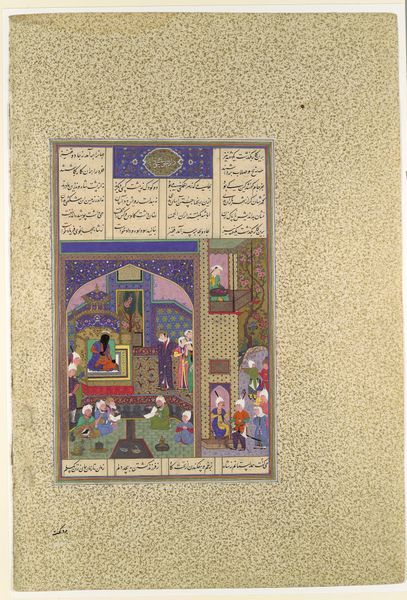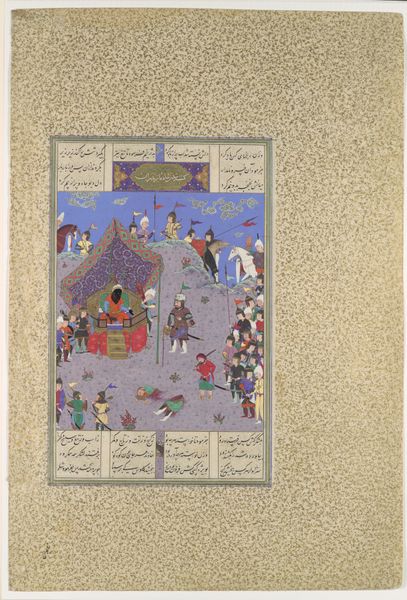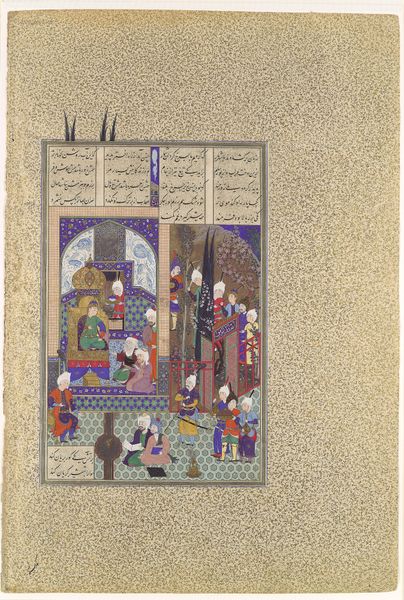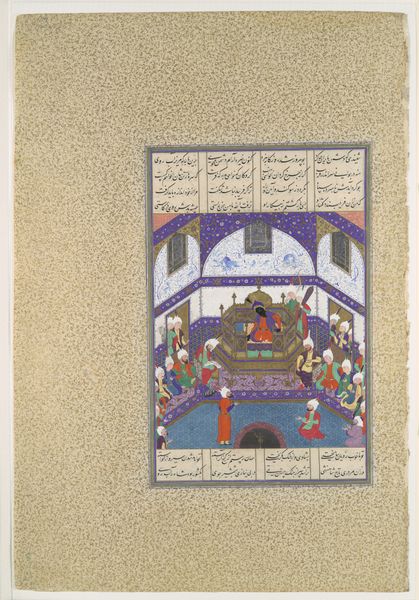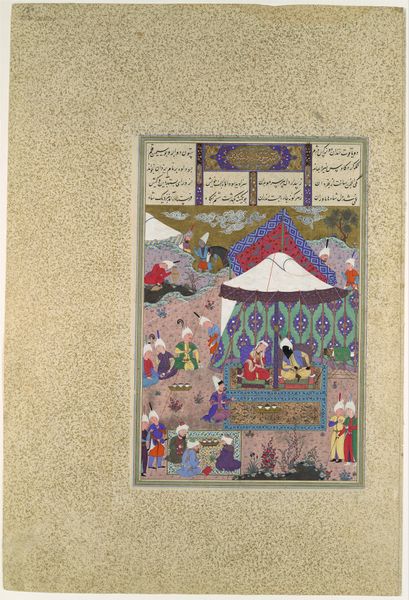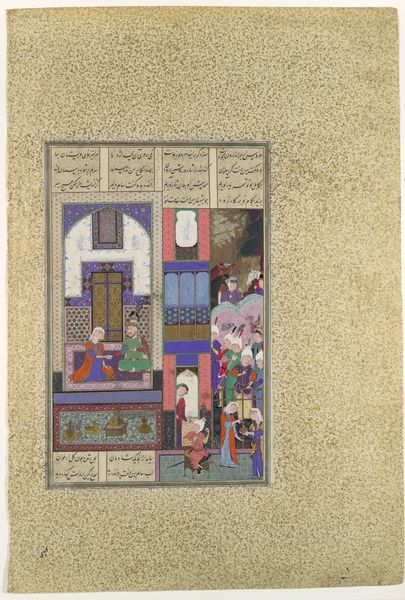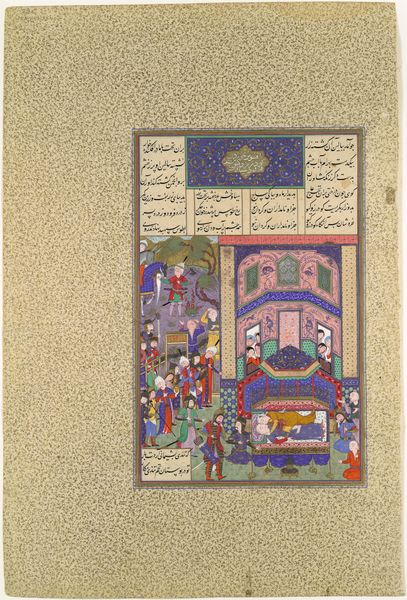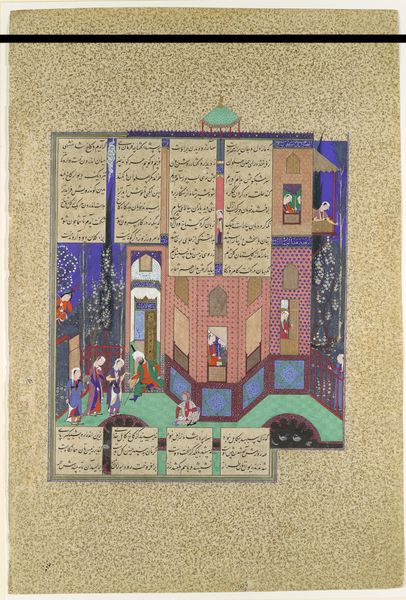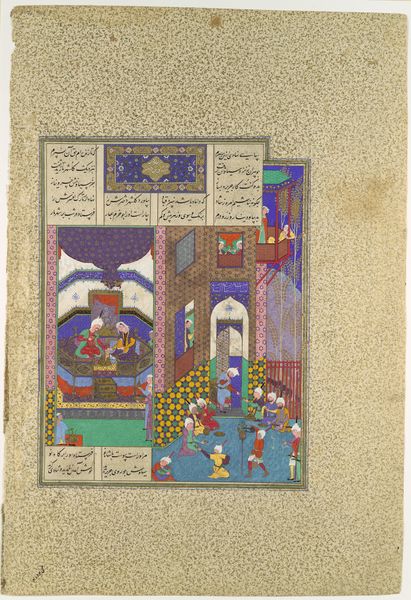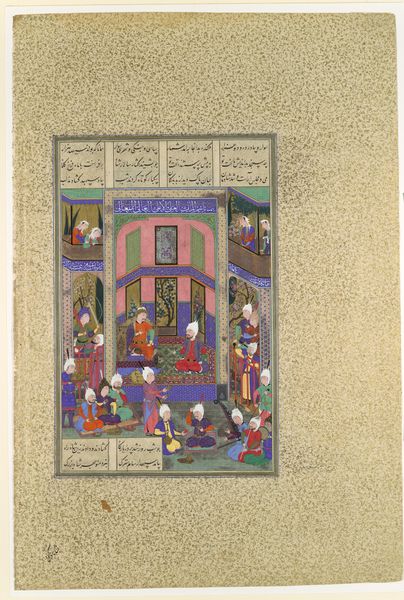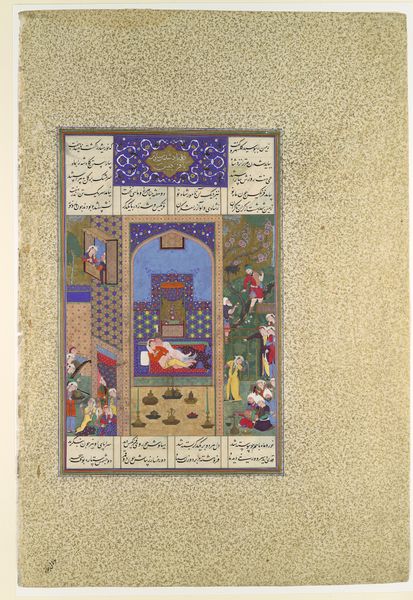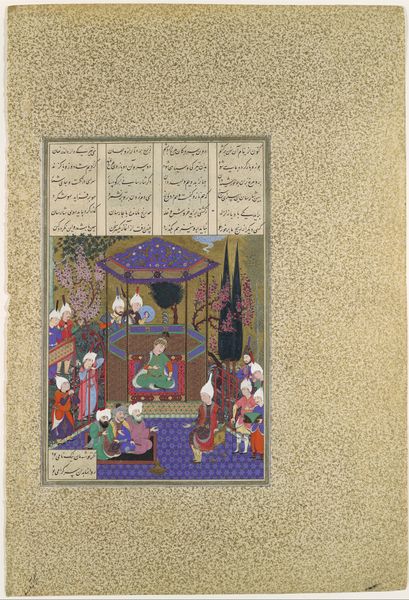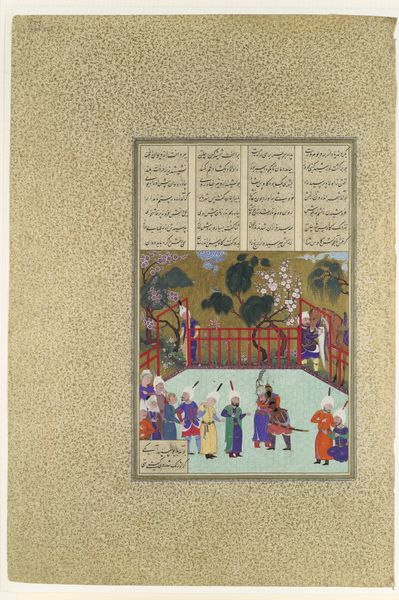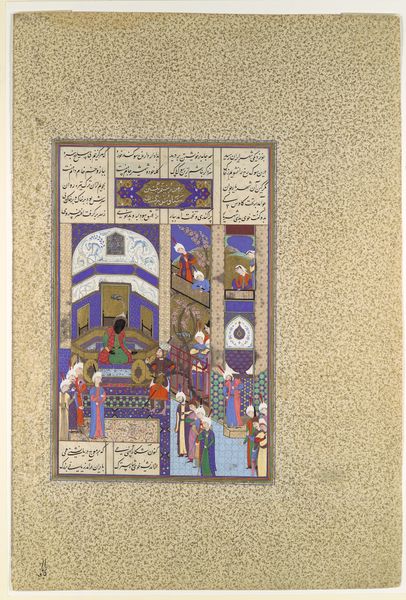
"Zal Questions Sam's Intentions Regarding the House of Mihrab", Folio 81v from the Shahnama (Book of Kings) of Shah Tahmasp 1500 - 1555
painting, watercolor
water colours
narrative-art
painting
landscape
figuration
watercolor
horse
men
islamic-art
miniature
Dimensions: Painting: H. 11 in. (28 cm) W. 7 1/8 in. (18.2 cm) Entire Page: H. 18 9/16 in. (47.1 cm) W. 12 7/16 in. (31.6 cm)
Copyright: Public Domain
Curator: Looking at this radiant image, we're presented with "Zal Questions Sam's Intentions Regarding the House of Mihrab," a page from the Shahnameh of Shah Tahmasp. The work, attributed to Abu'l Qasim Firdausi, dates to sometime between 1500 and 1555, and utilizes water colours. It's currently housed in the Metropolitan Museum of Art. Editor: My first impression is of contained drama. Despite the small scale of the miniature, the composition pulls me in. I’m particularly struck by the clear visual separation between the calm, controlled scene inside the tent and the more active, guarded one outside. It’s almost theatrical. Curator: Absolutely. Understanding the socio-political context surrounding the Shahnameh itself, this specific scene speaks to themes of power, succession, and, indeed, mistrust. The questioning of Sam's intentions must be considered against the tapestry of courtly intrigues, a very dangerous, competitive environment. Editor: Right, it prompts a look at the role imagery plays within courtly power dynamics. What do the gestures and groupings signify about authority and relationships within the Shah Tahmasp court itself? Curator: Consider also, that we see Zal depicted as skeptical, challenging Sam’s authority. Visually placing him as the questioner pushes viewers to ask how we situate youth versus experience or perceived wisdom within the Iranian context. Editor: And what about the presence of the armed guards, framing the narrative not only with beauty but overt military threat, so closely knit to governance in that particular Islamic context? Curator: That also opens conversations surrounding concepts of violence as structural. The necessity, from their perspective, to defend or protect positions from a threat - or perhaps only perceived threat, since their anxieties are present and are enforced with visual representation. Editor: Examining this folio really showcases the dynamic interplay between art as object and art as cultural record. Curator: It does indeed—the narratives, social structures, and ideologies all embedded, waiting for us to unpack and discuss the past for insights in the present.
Comments
No comments
Be the first to comment and join the conversation on the ultimate creative platform.
